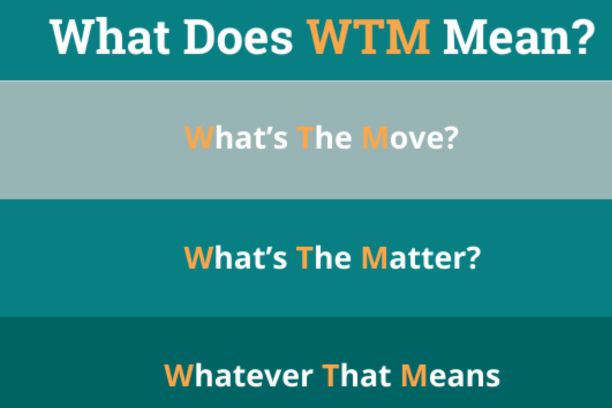When it comes to choosing a place to call home in the United States, one of the most significant factors people consider is the cost of living.
The cost of living can vary greatly from one state to another, and making the right choice can significantly impact your quality of life and financial well-being.
In this blog post, we’ll explore the 10 cheapest states to live in the USA, where the cost of living is comparatively lower, making it an attractive option for those looking to save money or live a more affordable lifestyle.
The cost of living in the United States varies widely from state to state. Some states are much more expensive to live in than others. This is due to a number of factors, including the cost.
These costs can also vary depending on where you live. Finally, factor in the cost of utilities. Utilities, such as electricity, gas, and water, can also add up.
Table of contents
Cheapest States to Live in the USA – Lowest Cost of Living
Here are the cheapest states to live in the USA with the lowest cost of living:
1. Mississippi
Mississippi, often regarded as the most affordable state in the country, boasts a remarkably low cost of living.
Housing costs are well below the national average, and essentials like groceries, healthcare, and transportation are also quite affordable.
This makes Mississippi an excellent choice for those seeking to stretch their dollars without sacrificing a comfortable lifestyle.
- House price: $164,490
- Apartment rent price: $810
- Groceries: $220
- Median household income: $45,792
- Population: 2.95 million
Read ALSO: How Many Bedrooms are in the White House?
2. Arkansas
Arkansas is another state that offers a budget-friendly living experience. Housing in Arkansas is notably affordable, making it a popular choice for families and retirees.
The state’s beautiful natural landscapes, including the Ozark Mountains and the Hot Springs National Park, provide an added bonus to its low cost of living.
- House price: $323,820
- Apartment rent price: $917
- Groceries: $250
- Median household income: $48,952
- Population: 3.026 million
3. Oklahoma
Oklahoma is known for its friendly people and a cost of living that won’t break the bank. Housing and utility costs are considerably lower than the national average.
Additionally, the state’s diverse culture, excellent cuisine, and thriving job market make it an attractive option for individuals and families looking for affordability without compromising quality of life.
- House price: $180,690
- Apartment rent price: $814
- Groceries: $350
- Median household income: $54,449
- Population: 3.987 million
4. Missouri
Missouri offers a balanced combination of urban and rural living, with cities like St. Louis and Kansas City offering affordable living conditions.
The state’s lower housing costs are a significant draw, and the overall cost of living is below the national average. With its rich history and cultural attractions, Missouri has something to offer everyone.
- House price: $229,765
- Apartment rent price: $834
- Groceries: $250
- Median household income: $57,409
- Population: 6.168 million
5. Tennessee
Tennessee is home to vibrant cities like Nashville and Memphis and stunning natural beauty, such as the Great Smoky Mountains.
The state’s low cost of living is complemented by no state income tax. Housing, healthcare, and groceries are all relatively affordable, making it a desirable destination for those looking for a lower cost of living while enjoying diverse entertainment options.
6. Alabama
Alabama boasts a lower-than-average cost of living, making it an appealing choice for people on a budget.
Housing costs are particularly affordable, and the state’s warm climate and southern hospitality add to its charm. Alabama offers a comfortable lifestyle without the high price tag found in many other states.
- House price: $216,108
- Apartment rent price: $807
- Groceries: $400
- Median household income: $51,734
- Population: 5.04 million
7. Kentucky
Kentucky is famous for its rolling hills, horse racing, and bourbon. It’s also known for its low cost of living.
Housing is highly affordable, and the state offers a variety of recreational activities, from outdoor adventures in the Appalachian Mountains to the vibrant music scene in Louisville.
8. Kansas
Kansas is often considered a hidden gem when it comes to affordability. The state’s housing and utility costs are significantly lower than the national average.
While it may not be the most glamorous choice, Kansas offers a solid quality of life in many other states without the steep price tag.
- House price: $205,574
- Apartment rent price: $904
- Groceries: $275
- Median household income: $62,087
- Population: 2.935 million
9. South Carolina
South Carolina offers an attractive coastal living experience at a fraction of the cost of other coastal states.
The state’s cost of living is below the national average, and its beautiful beaches and warm climate make it an appealing destination for retirees and those seeking a relaxed lifestyle.
10. Indiana
Indiana rounds out our list of the top 10 cheapest states in the USA. With affordable housing and a low cost of living, Indiana provides a comfortable environment for its residents.
The state’s major cities, like Indianapolis, offer diverse employment opportunities and cultural attractions.
- House price: $221,019
- Apartment rent price: $840
- Groceries: $275
- Median household income: $57,603
- Population: 6.806 million
Read Also: Does Foodmaxx Take Apple Pay and How Do I Use It?
Factors Influencing the Cost of Living
Several factors contribute to the cost of living in a particular state. Understanding these factors can help you make an informed decision when choosing where to live:
- Housing Costs: Housing costs, including rent or mortgage payments, property taxes, and insurance, are often the most significant expense for individuals and families. The affordability of housing varies widely across states.
- Utilities: The cost of utilities, including electricity, gas, water, and internet, can also vary from one state to another. Some states have higher utility costs due to extreme weather conditions, while others benefit from renewable energy sources and lower consumption rates.
- Groceries: The price of groceries and food items can fluctuate based on factors like agricultural production, transportation costs, and local economic conditions.
- Transportation: Transportation expenses include vehicle costs, public transportation, and fuel prices. States with extensive public transportation systems and lower gas prices tend to have a lower overall cost of living.
- Healthcare: The cost of healthcare, including insurance premiums and out-of-pocket expenses, can significantly impact the cost of living. States with lower healthcare costs and insurance premiums tend to be more affordable.
- Income Tax: State income taxes can vary widely, with some states not imposing an income tax. A lack of state income tax can result in higher take-home pay for residents.
- Job Market: A strong job market with various employment opportunities can help mitigate a higher cost of living, allowing residents to earn more income.
- Quality of Life: While this article focuses on cost, quality of life is equally important. States that offer a balance of affordability and a high quality of life are often the most attractive options.
How Do I Choose the Right State for Me?
When considering the cheapest states to live in, it’s crucial to remember that affordability is just one aspect of the decision-making process. You should also consider your personal and professional needs, lifestyle preferences, and long-term goals. Here are some additional considerations to keep in mind when choosing where to live:
- Job Opportunities: While lower-cost states may be attractive, evaluating the availability of job opportunities in your field is essential. A high-paying job in a more expensive state may still provide better financial security than a lower-paying job in a cheaper state.
- Quality of Education: If you have children or plan to in the future, the quality of the education system is a crucial consideration. Research the schools in your prospective state to ensure they meet your expectations.
- Climate and Geography: Consider your preferences for climate and geography. Some people enjoy the four seasons and proximity to mountains, while others prefer a warm coastal climate.
- Community and Lifestyle: Think about the community and lifestyle you desire. Do you prefer a bustling city or a quiet rural area? Your chosen location’s social and recreational opportunities can significantly impact your happiness.
- Taxes and Financial Planning: Consult with a financial advisor or professional to understand state taxes’ implications and how they may affect your financial situation.
Read ALSO: Who Owns Snapchat? Everything to Know
FAQs
Mississippi leads with the most affordable housing costs among our top contenders.
Absolutely! These states offer affordable living, making them popular choices for retirees looking to make the most of their savings.
Not at all. While these states are budget-friendly, they still provide excellent healthcare, education, and recreational opportunities.
Job markets vary, but these states offer employment opportunities in various industries. Research your specific field for the best fit.
Yes, Florida and Texas have no state income tax, making them attractive options for those seeking tax relief.
Conclusion
Choosing where to live in the United States is a personal decision that involves weighing various factors, with the cost of living being a significant consideration for many. The 10 states mentioned in this article offer some of the country’s lowest living costs, making them appealing options for individuals and families looking to maximize their savings and financial security.
However, it’s essential to remember that the cheapest state to live in may not necessarily be the best fit for everyone. Factors such as job opportunities, education, climate, and lifestyle preferences should also guide your decision.





